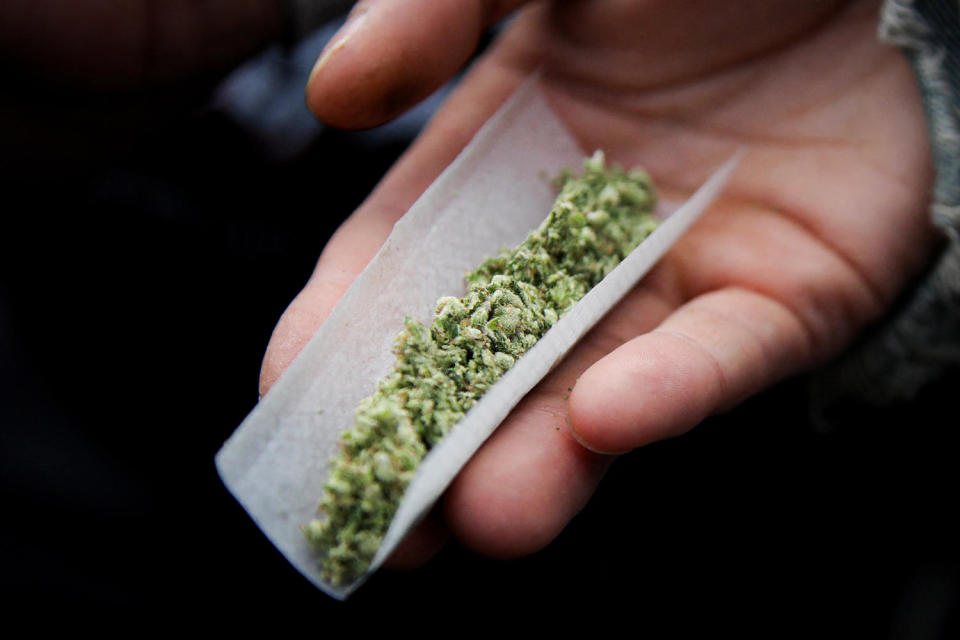Teens who use marijuana are more likely to suffer psychotic disorders, study finds
Teenagers who used cannabis within the last year had a dramatically higher rate of developing a psychotic disorder, according to a study published Wednesday.
The study, led by researchers from the University of Toronto, found an 11 times higher risk of developing a psychotic disorder among teenagers who used cannabis compared with those who did not. When the analysis was limited to just emergency room visits and hospitalizations, there was a 27-fold increase in psychotic disorders in teenagers who had used the drug.
“When I see youths with psychotic symptoms, they’re almost always using lots of cannabis,” said Dr. Leslie Hulvershorn, a child psychiatrist and chair of the psychiatry department at Indiana University who was not involved with the study. “It would be unusual to see someone present with psychotic symptoms to a hospital and not have smoked cannabis.”

The paper adds to the growing body of research that links cannabis to an increased risk of psychotic disorders, particularly in adolescence. Use of marijuana, particularly higher-potency products, has been linked to a variety of mental health disorders, including schizophrenia, anxiety and depression.
“I think that there’s enough evidence out there for us to give recommendations that teens probably shouldn’t be using cannabis,” said the study’s lead author, Andre McDonald, a postdoctoral research fellow at McMaster University in Hamilton, Ontario. “If we can somehow ask teens to delay their use until their brain has developed a little further, I think that would be good for public health.”
While most teenagers who use cannabis will not develop psychotic disorders, McDonald said, the findings are concerning given how debilitating these conditions can be.
The new study, like previous research on marijuana and psychosis, does not directly prove that marijuana is causing psychotic disorders. While it’s possible that teens who were prone to develop psychotic disorders could have also been more likely to use cannabis, it’s unlikely because of how striking the association was, Hulvershorn said.
“The magnitude of the effect here is just hard to believe that it’s not related to cannabis,” Hulvershorn said.
There was no association between cannabis use and psychotic disorders in people ages 20 to 33.
“There’s something about that stage of brain development that we haven’t yet fully characterized — where there’s a window of time where cannabis use may increase the risk of psychosis,” said Dr. Kevin Gray, a professor of psychiatry and director of addiction sciences at the Medical University of South Carolina who was not involved with the study. “This study really puts a fine point on delaying cannabis use until your 20s may mitigate one of the most potentially serious risks.”
The Biden administration has been moving toward rescheduling marijuana from Schedule I to the less dangerous Schedule III, which would also acknowledge its medical benefits at the federal level. While the potential change is expected later this year, cannabis is currently legal in 24 states for recreational use.
Marijuana use among high school students has remained steady in recent years. Nearly 1 in 3 12th graders reported using it in the previous year, according to the 2023 Monitoring the Future Survey, an annual survey that measures drug and alcohol use among adolescent students nationwide.
The new research, published in the respected journal Psychological Medicine, includes data from over 11,000 teens and young adults who were ages 12 to 24 at the beginning of the study.
The authors pulled from the annual Canadian Community Health Survey, focusing on 2009 to 2012. Participants were then followed for up to nine years after the initial survey to track any visits they may have had to doctors or emergency rooms or any times they were admitted to hospitals..
Of the teens who were hospitalized or visited emergency rooms for psychotic disorders, roughly 5 in 6 had reported previous cannabis use.
“We see this replicated over and over again that there’s this developmental window of adolescence that’s very high-risk,” Gray said.
It’s not completely clear why, he added, but one theory is that disruptions to the endocannabinoid system in adolescence may make psychotic symptoms more likely. The endocannabinoid system is a complex signaling system in the brain that marijuana targets. That could make it harder to distinguish reality from what is going on inside the head, leading to symptoms such as hallucinations.
The authors did not specifically look at how the potency of marijuana products affected the risk of mental disorders, although previous research has found an increased risk.

